German School of the 18th century.
Dim without frame 29 X 23
Dim with frame 35.5
The glass supports the paint like a canvas would. Glass thus serves as both a support and a protective varnish. It is a “cold” painting technique so the process does not require baking. The pigment is bonded to the glass by an oily vehicle, most often varnish-based. Reverse glass painting has been known in the West since ancient times. Described as “learned art”, it was during the Renaissance that this art form reached its peak in that the compositions became very elaborate, the colors harmonious, the virtuosity of the technique dizzying. Until then reserved for an elite of artists, painting on reverse glass spread widely and became a popular art in Europe during the second half of the 18th century.




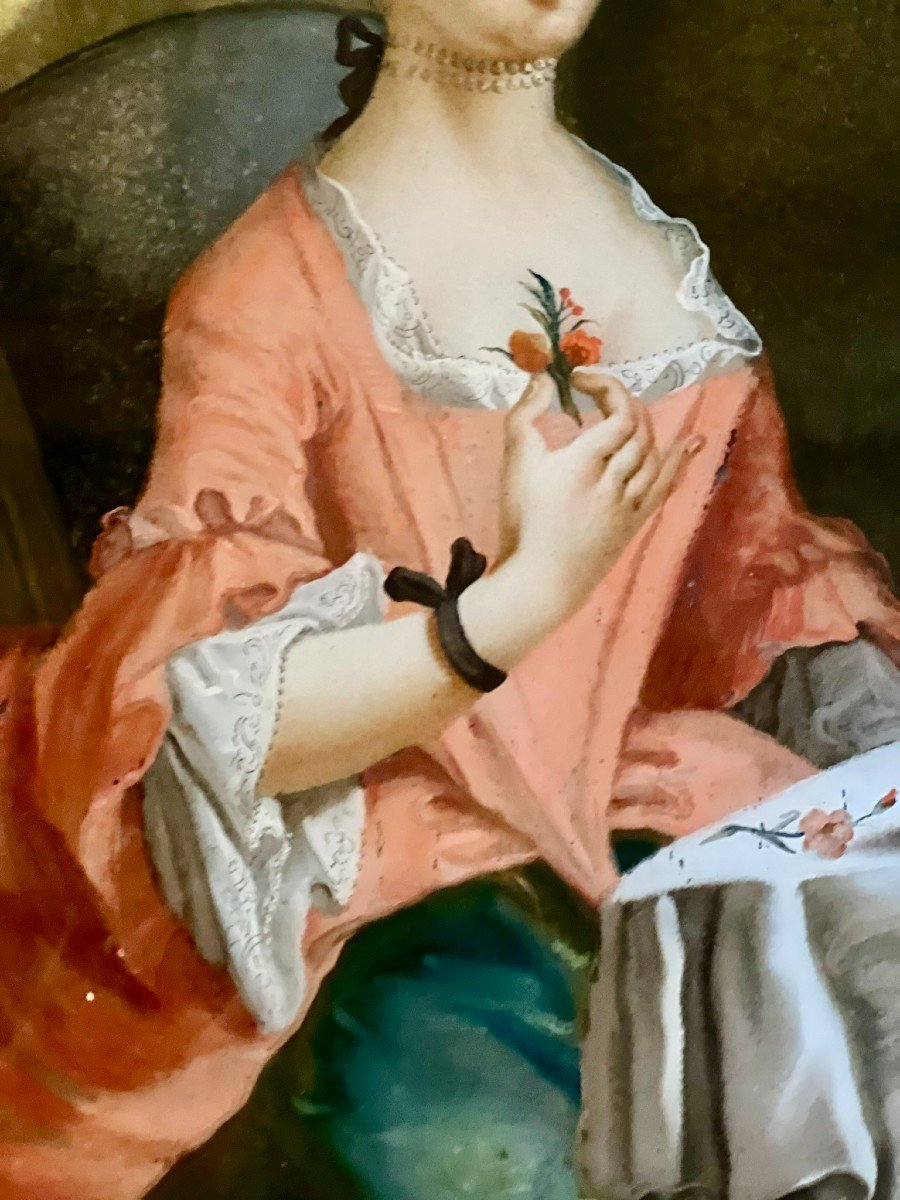



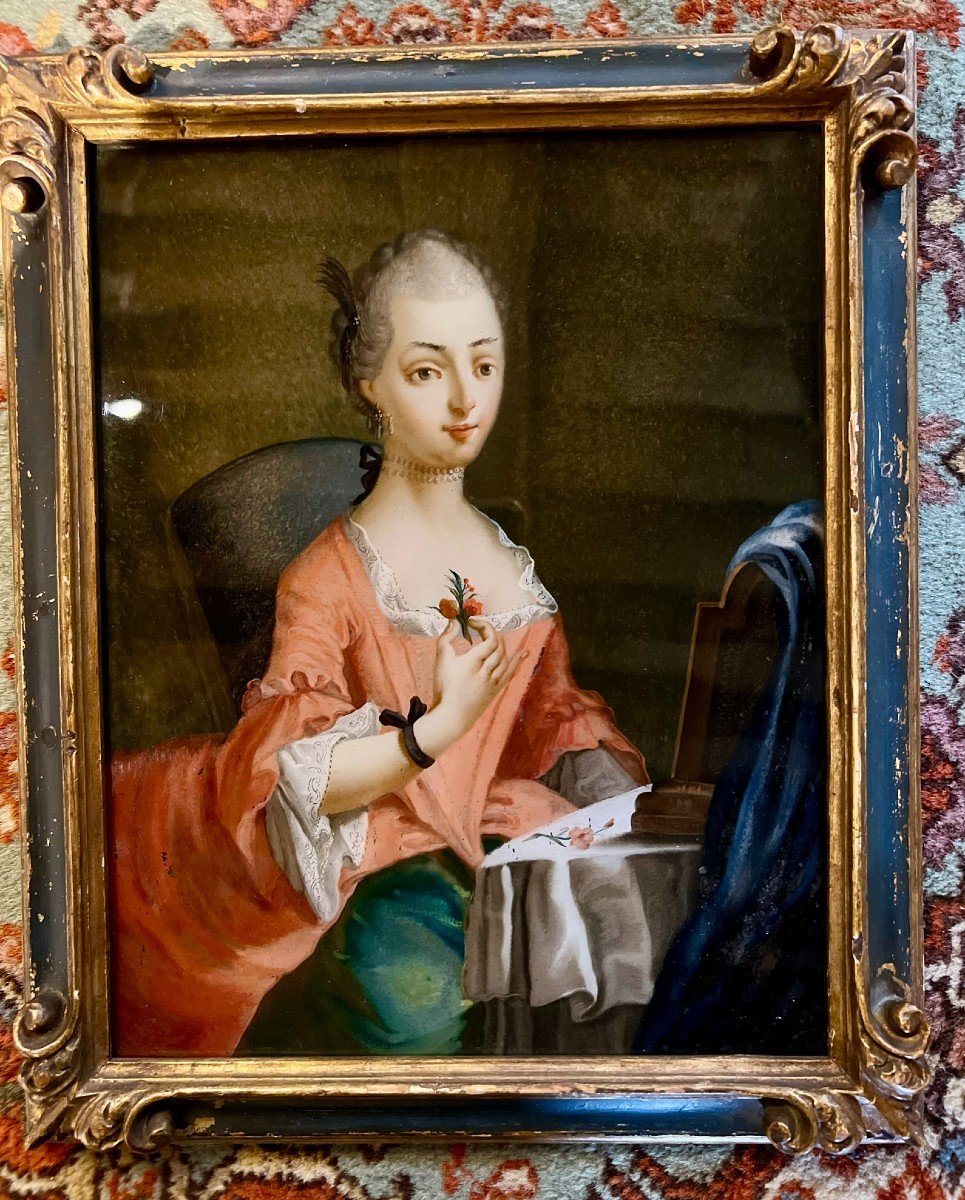
















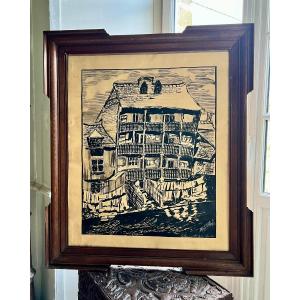







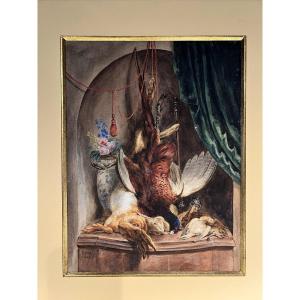

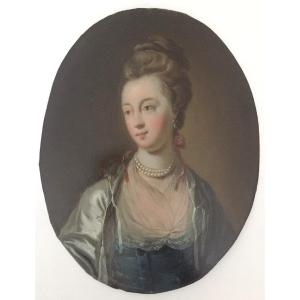






 Le Magazine de PROANTIC
Le Magazine de PROANTIC TRÉSORS Magazine
TRÉSORS Magazine Rivista Artiquariato
Rivista Artiquariato